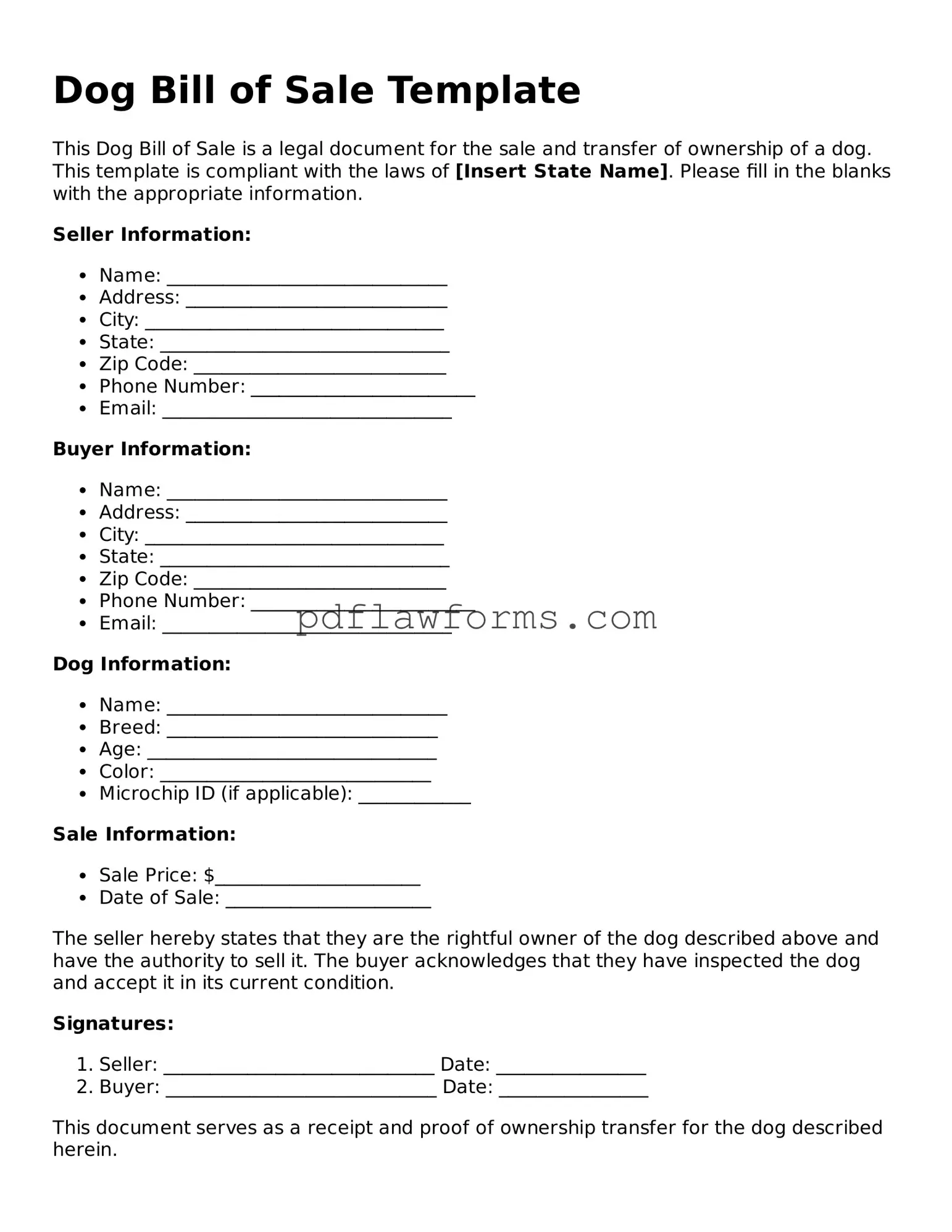Filling out a Dog Bill of Sale form can seem straightforward, but many people make common mistakes that can lead to confusion or legal issues down the line. One frequent error is failing to provide complete information about the dog. Details such as breed, age, and any identifying features should be included. Omitting this information can create disputes later on.
Another mistake often seen is not including the seller's and buyer's full names and addresses. This information is crucial for establishing a clear record of the transaction. Without it, proving ownership or resolving disputes can become complicated.
Many people also overlook the importance of signing the document. A Dog Bill of Sale is not legally binding unless both parties sign it. This simple step is essential for ensuring that the sale is recognized by law.
Additionally, some sellers fail to disclose important health information about the dog. If the dog has any known medical issues, these should be clearly stated in the form. Transparency helps build trust and can prevent potential legal issues in the future.
Another common oversight is not including the sale price. This detail is important for both parties and can affect the legal standing of the transaction. Clearly stating the amount paid prevents misunderstandings later on.
People often forget to keep a copy of the completed Dog Bill of Sale for their records. Having a copy can be invaluable for future reference, especially if questions about ownership arise.
Finally, some individuals may not realize that additional terms can be included in the form. If there are specific conditions regarding the sale, such as a return policy or ongoing care instructions, these should be documented. This clarity can help both parties understand their responsibilities.
